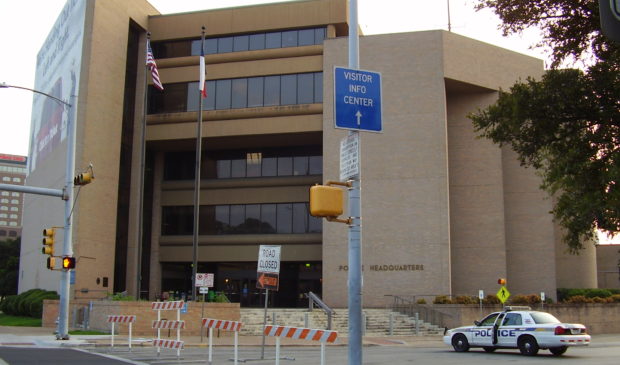Public Safety Commission considers a new vision for APD headquarters
Thursday, September 10, 2020 by
Jessi Devenyns A conversation on the future of the Austin Police Department headquarters is following on the heels of City Council’s reformulation of Austin’s police budget last month.
On Sept. 9, the Public Safety Commission articulated a new vision for the current headquarters on Eighth Street and Interstate 35.
“APD headquarters would be moved somewhere else and that land would be redeveloped in a way that honors the movement that’s been going on – valuing black and brown lives. It would also be the embodiment of Council’s reimagining of public safety,” Commissioner Rebecca Webber explained.
While the idea for refurbishing the building is not new, its potential use going forward as something other than a police headquarters is. Webber introduced the item saying the idea was first proposed at the newly minted Public Safety Committee, where Council Member Jimmy Flannigan asked the commission to take up the topic at its public meeting. She said Wednesday’s meeting served as an initial exploration of the subject and that she would like to hear from the police department at a future time about whether the department needs its centralized location downtown.
As part of the discussion, representatives from local nonprofits and public safety unions came to speak and present community needs that are integral to public safety and that can benefit from a consolidated location.
Selena Xie, the president of the Austin EMS Association, told commissioners she believes the building should remain in the city’s real estate portfolio. “We don’t have the luxury to just purchase buildings,” she said, explaining that real estate prices prevent the city from easily acquiring a new central location.
However, instead of serving as a site for just the police department, she suggested a joint-use space where all three public safety agencies can coordinate efforts and more seamlessly create a “game plan” to effectively provide safety and support to downtown. She said she has had multiple conversations with the union presidents from the three public safety branches and that they are in agreement with the proposal.
Other ideas included a public-private partnership where social services and public safety departments are housed in the building alongside private office space to subsidize the cost of operating public safety services at the central location.
“The city actually has a lot of latitude to free up the site and do a lot of things with it,” Conor Kenny, the former chair of the Planning Commission and director of public affairs at Civilitude, told commissioners. He said a redevelopment can extend the building footprint “really to the borders of the sidewalk” under the current zoning on the property and that he estimates the height of the building between eight and 10 floors.
He noted that the city can consider modifying the Capital View Corridor which is currently limiting the building’s height in order to increase the square footage, and therefore, the services in the building. “On the outside, the sky’s the limit, almost literally,” he said.
Representatives from the tenants rights group BASTA and DivInc., an accelerator that works on diversity in tech, proposed including social justice nonprofits. Introducing these support services and maximizing opportunities for Black and brown communities can help correct power imbalances and bridge gaps between populations, according to Shoshana Krieger with BASTA.
Darrell Alexander, the city’s building services officer, told commissioners the city cannot actively consider these changes until it determines the needs of APD, which will dictate where they can move the headquarters. He said it will take up to six weeks to make a determination.
Although commissioners agreed that refurbishing APD’s headquarters in any form or fashion will take time, they agreed that the conversation should continue. “APD has had complaints about this site for a long time. It’s destined to be redeveloped,” Kenny said.
The Austin Monitor’s work is made possible by donations from the community. Though our reporting covers donors from time to time, we are careful to keep business and editorial efforts separate while maintaining transparency. A complete list of donors is available here, and our code of ethics is explained here.
You're a community leader
And we’re honored you look to us for serious, in-depth news. You know a strong community needs local and dedicated watchdog reporting. We’re here for you and that won’t change. Now will you take the powerful next step and support our nonprofit news organization?



